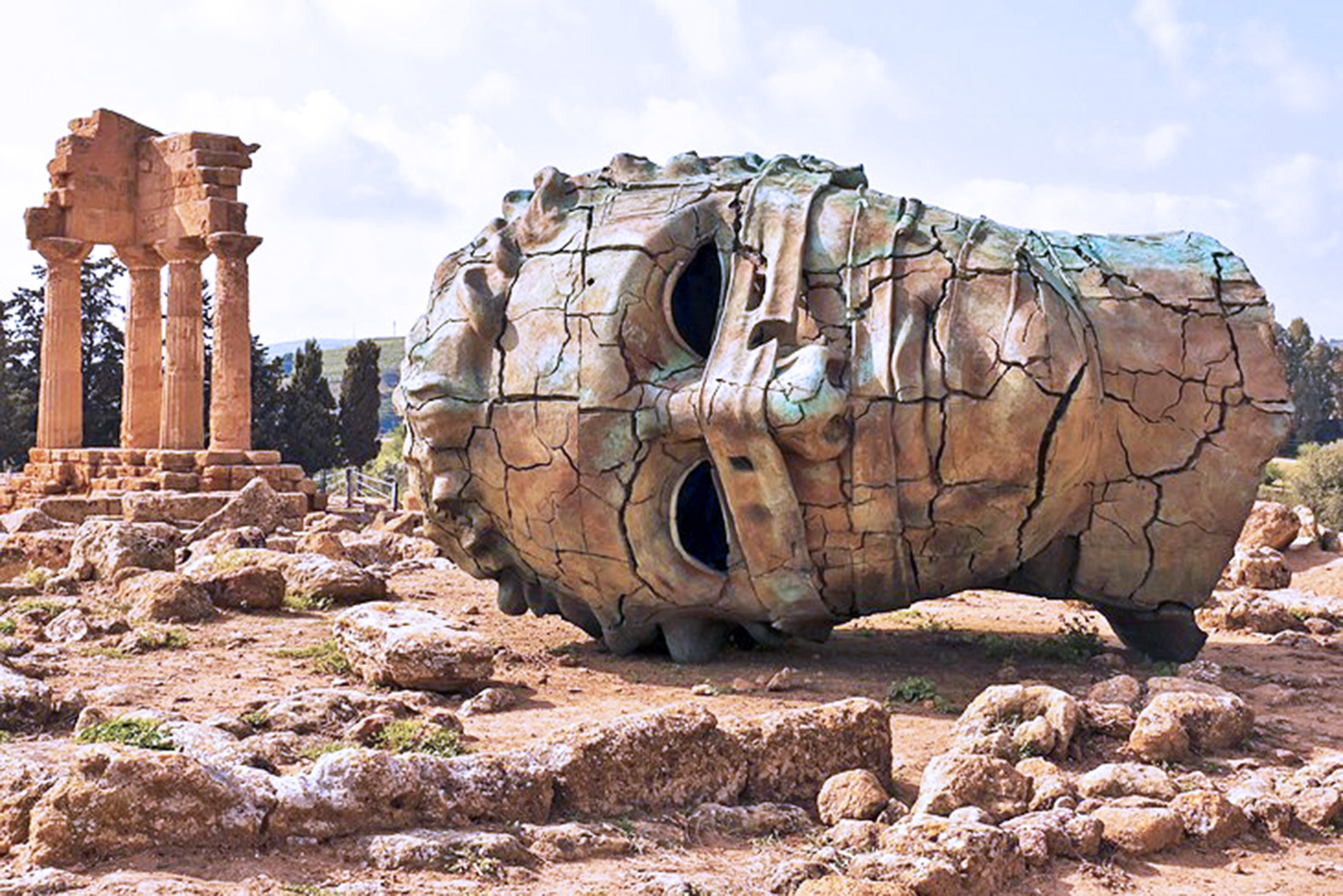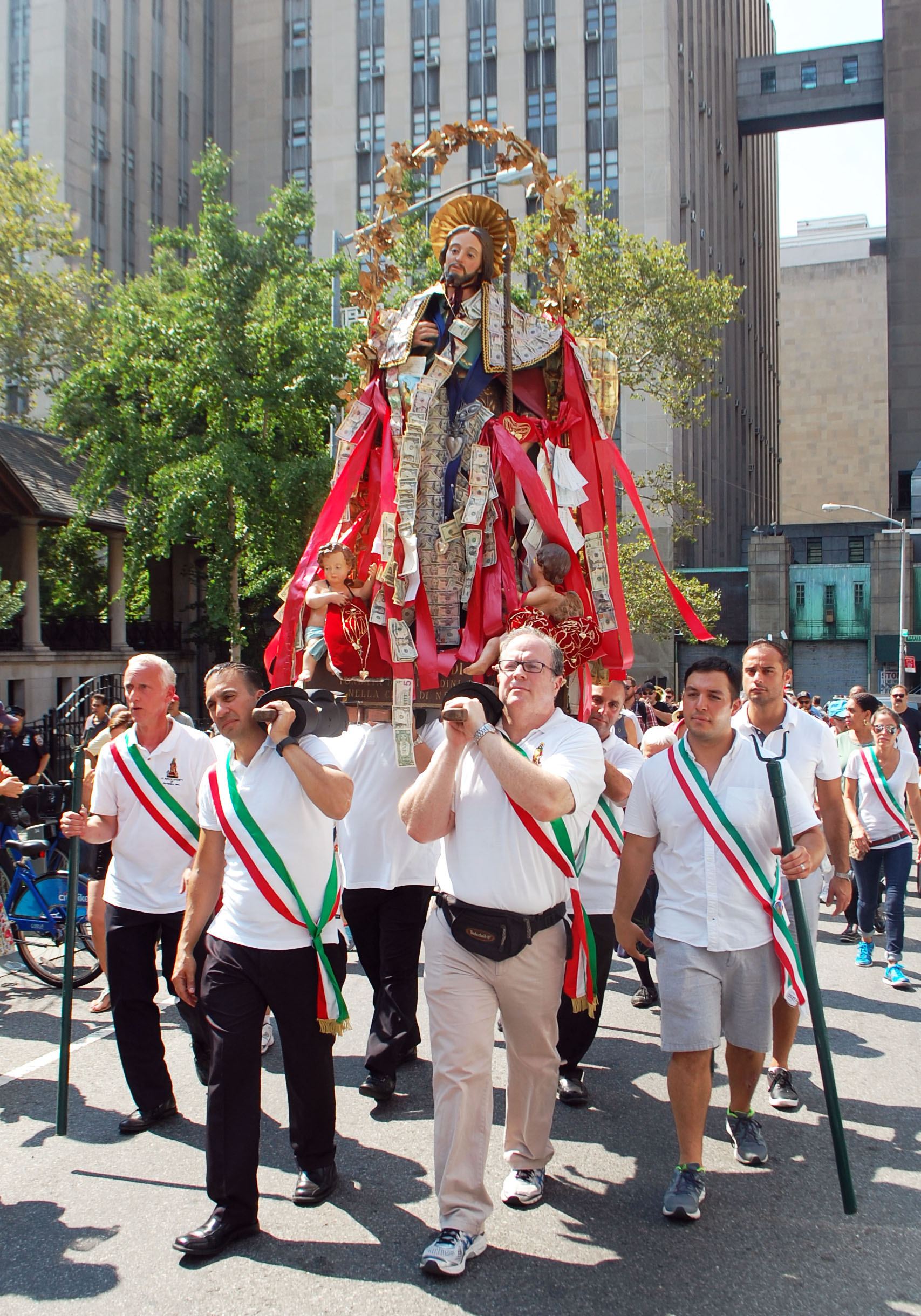One of the most popular and fascinating places to visit in Sicily is Agrigento. Located on the southwest coast of the island, Agrigento is a modern city of about 60,000. However, eons ago, it was the location of the Greek city of Akragas. Settled by travelers from Rhodes and Crete, it was favored because its land was ideal for cultivating olives, grapes and grains. The colony was founded in the sixth century BC and in time grew to become one of the most important and wealthiest cities of greater Greece. However, success can breed contempt and such was the case in 406 BC, when Hannibal and the Carthaginians, working with Dionysius of Siracusa, laid siege to the city. After holding out for eight months, Akagras finally fell. Carthage ruled the area for the next two centuries, but was defeated by Rome in 210 BC.
The city enjoyed a peaceful and prosperous era for centuries, until the fall of Empire. The fate of Agrigento then followed that of Sicily, first falling into Byzantine hands and then subjected to Norman rule. The history of Agrigento then became more complicated as Sicily found itself variously ruled by the Spanish and French empires, with incursions by marauders and pirates – a seemingly never-ending worry. During the Risorgimento, the people of the city enthusiastically supported Garibaldi’s invasion of Sicily in 1860. Soon thereafter, Italy was unified under King Victor Emanuele.
A tour into the old, medieval heart of Agrigento, with its narrow stepped streets is strongly recommended for visitors. Follow the main street, Via Atenea, which begins in the eastern part of town and runs west from Piazza Aldo Moro. It is an attractive street lined with shops, trattorias and bars. Narrow alleyways wind upwards off the main street past tightly packed palazzi interspersed with historic churches. As you cross Via Atenea, venture down the avenues on your right to the Chiesa di Santa Maria dei Greci. It is an interesting Norman church built some 1000 years ago on the site of an ancient Greek temple. Remnants of the Greek columns are visible in the nave. Additionally, the city’s archaeological museum is well worth a visit and helps to place the rich architectural history of the area into context. Its displays consist of artifacts ranging over many centuries, extending all the way back to Agrigento’s founding days.
On the coast is a unique formation of rock called Scala dei Turchi, “Stair of the Turks,” a rocky cliff near Porto Empedocle. It has become a popular tourist attraction due to its unusual white color and series of “steps” formed over countless tides washing away at the sedimentary rock. It lies between two sandy beaches and is accessed through a limestone rock formation in the shape of a staircase, hence the name. The latter part of the name derives from the frequent raids carried on by Moors. In August 2007, the site applied for inclusion in the UNESCO Heritage list.
One of the most unusual of sites in the province is found in the small town of Realmonte. Within the ancient salt mines is the Cathedral of Sale, a structure created by miners who sculpted the salt rocks into a place of worship. Inside the Cathedral you will find various works carved into the walls, including the Holy Family, Jesus on the Cross and several other bas reliefs.
The beauty of nature can also be enjoyed at several beaches in the province. Perhaps the most beautiful is the one that is most inaccessible in the Riserva Naturale di Punta Bianca; but for those who do not want to have a lengthy trek by foot, Spiaggia at Siculiana Marittima, Lido Sabbia D’Oro and Spiaggia Capo San Marco each offer splendid beaches with crystal clean water and a relaxed atmosphere.
One of Sicily’s most famous historical attractions is without a doubt the Valley of the Temples, just outside Agrigento. This splendid archaeological park consists of eight temples and various other remains built between 510 BC and 430 BC. The landscape of the plateau consists of two broad ridges, the uppermost is the site of the modern city of Agrigento and the lower is the site of the Valley of the Temples, where Greek architects and builders created an amazing complex of sacred buildings. In 1996, the area was declared a world heritage site by UNESCO.
The site includes the Temples of Hera, Concordia, Heracles, Olympian Zeus, Castor and Pollux, Hephaestos, Demeter and Asclepius (the God of Medicine). At night, the Valley of the Temples is lit, making for a spectacular site from the heights of the city.
The temples are divided into eastern and western zones. The first temple east of the entrance is the Tempio di Ercole or Temple of Hercules. It is a long thin structure with only about 30% of it still standing today. It is the oldest of the temples, built towards the end of the 6th century BC. Next, heading east is the large Tempio della Concordia or Temple of Concord. This impressive structure was built around 450 BC. Continuing above small cliffs at the edge of the ridge will bring you to the Tempio di Giunone or Temple of Juno. Partially ruined, it is often overlooked by visitors. Here’s an insider tip: it offers one of the best views of the other temples along the ridge.
To the west of the main entrance is the massive Tempio di Giove or Temple of Jupiter. It was never completed and now lies entirely in ruins. The other temples are also fragmentary, having been toppled by earthquakes long ago and quarried for their stones. The largest by far is the Temple of Olympian Zeus, built to commemorate the Battle of Himera in 480 BC. It is believed to have been the largest Doric temple ever built. Although it was apparently used, it appears never to have been completed; construction was abandoned after the Carthaginian invasion of 406 BC. Behind it is the small ruined Tempio di Dioscure. Beyond the main temple site is the small, but interesting Tomba di Terone.
For those who find antiquities to be fascinating, there are few places in the world where greater treasures can be found than in Agrigento. With its beautiful views and wonderful beaches, it is a memorable journey to a fascinating province.





